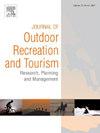Senior outdoor tourists’ injuries, illnesses & infirmities: Reveal or conceal?
IF 4.4
3区 管理学
Q1 HOSPITALITY, LEISURE, SPORT & TOURISM
Journal of Outdoor Recreation and Tourism-Research Planning and Management
Pub Date : 2025-06-16
DOI:10.1016/j.jort.2025.100912
引用次数: 0
Abstract
Tourism enterprises balance commercial opportunities from older clients, against costs of adapting to greater health and safety risks. We use prospect theory to analyse when and why senior outdoor tourists reveal or conceal injuries, illnesses or infirmities, using actual health and safety incidents from 3012 tourists on 166 tours in 30 countries, and 1716 tourists on 122 repetitions of a single tour. Senior outdoor tourists’ communications of health information demonstrate all four key components of prospect theory: reference dependence, loss aversion, diminishing sensitivity, and probability weighting. They match the fourfold pattern of risk attitudes under prospect theory in tourism specifically: loss-gain asymmetries dependent on circumstances; reversed sensitivities for hedonic experiential goods; and reference points shifted by social factors. Research priorities include trade-offs between age factors, activities, and adaptation costs. Management measures include incentives for more communication and less concealment.
Management implications
Some senior outdoor tourists suffer from prior injuries, illnesses and infirmities that increase risks of health and safety incidents on tour. It is preferable for tour operators that clients reveal these issues at booking, but individual tourists may have incentives to conceal them. We apply the behavioural economics framework of prospect theory to a large global set of tours and incidents, and numerous replicates of one tour, to identify factors controlling tourists’ choices, and hence the incentives that tour operators can adopt to minimise concealment. We propose multiple practical approaches to address these concerns.
老年户外游客的伤、病、弱:暴露还是隐藏?
旅游企业在老年客户带来的商业机会与适应更大健康和安全风险的成本之间进行平衡。我们使用前景理论来分析老年户外游客何时以及为什么会暴露或隐瞒伤害、疾病或虚弱,使用来自30个国家166个旅行团的3012名游客的实际健康和安全事件,以及来自1716名游客的122次重复的单次旅行团。老年户外游客健康信息沟通表现了前景理论的四个关键组成部分:参考依赖、损失厌恶、敏感度递减和概率加权。它们特别符合旅游业前景理论下风险态度的四重模式:依赖于环境的损益不对称;对享乐体验品的反向敏感性;参考点也因社会因素而改变。研究重点包括年龄因素、活动和适应成本之间的权衡。管理措施包括鼓励更多的沟通和更少的隐瞒。对管理的影响一些年长的户外游客以前曾受伤、患病和体弱多病,这增加了旅游中发生健康和安全事件的风险。对于旅行社来说,最好是客户在预订时透露这些问题,但个人游客可能有隐瞒这些问题的动机。我们将前景理论的行为经济学框架应用于大规模的全球旅游和事件,以及一次旅游的多次重复,以确定控制游客选择的因素,从而确定旅游经营者可以采取的激励措施,以最大限度地减少隐瞒。我们提出了多种切实可行的方法来解决这些问题。
本文章由计算机程序翻译,如有差异,请以英文原文为准。
求助全文
约1分钟内获得全文
求助全文
来源期刊

Journal of Outdoor Recreation and Tourism-Research Planning and Management
HOSPITALITY, LEISURE, SPORT & TOURISM-
CiteScore
6.70
自引率
5.30%
发文量
84
期刊介绍:
Journal of Outdoor Recreation and Tourism offers a dedicated outlet for research relevant to social sciences and natural resources. The journal publishes peer reviewed original research on all aspects of outdoor recreation planning and management, covering the entire spectrum of settings from wilderness to urban outdoor recreation opportunities. It also focuses on new products and findings in nature based tourism and park management. JORT is an interdisciplinary and transdisciplinary journal, articles may focus on any aspect of theory, method, or concept of outdoor recreation research, planning or management, and interdisciplinary work is especially welcome, and may be of a theoretical and/or a case study nature. Depending on the topic of investigation, articles may be positioned within one academic discipline, or draw from several disciplines in an integrative manner, with overarching relevance to social sciences and natural resources. JORT is international in scope and attracts scholars from all reaches of the world to facilitate the exchange of ideas. As such, the journal enhances understanding of scientific knowledge, empirical results, and practitioners'' needs. Therefore in JORT each article is accompanied by an executive summary, written by the editors or authors, highlighting the planning and management relevant aspects of the article.
 求助内容:
求助内容: 应助结果提醒方式:
应助结果提醒方式:


